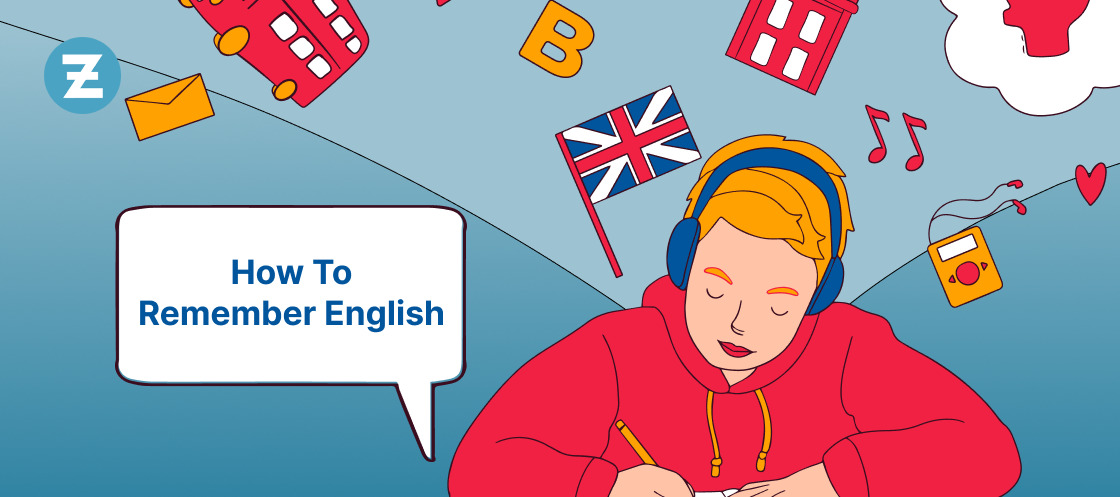When someone greets you, the way you respond can set the tone for your entire conversation. A strong reply is more than just etiquette; it shows awareness and respect for the person initiating contact. Advanced phrases add depth to these interactions, taking them beyond simple exchanges to meaningful engagement. These replies often reflect cultural nuances and personal style. Mastering such responses helps foster positive relationships in both social settings and professional environments where first impressions are vital.
Read also: Is Grammar Important in English Learning?
Formal Greeting Responses
When one receives a formal greeting, it’s key to respond in kind. A crisp “good morning” might be met with an equally polite “Good morning to you.” If someone asks, “How do you do?”, a proper reply is often the echo of the question itself: “How do you do?” It acknowledges their inquiry without overstepping any bounds. In business or ceremonial contexts like meetings or weddings, responses tend to adhere strictly to decorum. Responding with gratitude can elevate interaction; for instance, after being welcomed—say at a conference—one may say “Thank you for having me.” This not only replies aptly but also conveys appreciation. Keeps interactions smooth and professional respect intact.
Casual Ways to Say Hello Back
When someone says “Hi” or even a friendly “Hi there,” these are easy ways to respond. These greetings fit in any casual situation and keep the mood light. Replying with a question like “How’s it goin’?” starts an informal chat by asking about their day—expect either smiles or sighs, hinting at how they feel. Jump into a conversation using phrases such as “How are you?” or its breezy cousin, “How ya doin’?”. Most folks tend to say they’re doing well; after all, saying you’re good is almost reflexive in America. To dig deeper into what’s happening around them, try “What’s going on?”, signaling your interest without prying too much. Occasions might also call for a polished touch—even if still relaxed—with words like “Good afternoon” or “Good evening,” which convey respect yet remain casually polite. Remember that practice sharpens one’s language skills—a key step towards sounding more native-like in English exchanges.
Elevate Your Language: Polite Replies
In elevating language through polite replies, it’s key to show respect while still keeping the conversation light. Simple words can carry great meaning. For instance, “Thank you for asking,” is a considerate response that goes beyond the usual “I’m fine.” It shows gratitude and acknowledges the other person’s interest in your well-being. One should answer with thoughtful phrases like, “That’s very kind of you,” which not only appreciates politeness but also encourages positive dialogue. Experts suggest using words such as ‘appreciate’ or ‘value’ to convey sincere sentiments without complexity. A study by Cambridge University indicates that people who often use acknowledgments such as “I appreciate your time” are perceived more positively than those who don’t acknowledge others’ efforts in communication. This reflects an understanding heart and mind at work behind every word chosen.
Humorous Comebacks for Everyday Hellos
In the playful art of banter, everyday greetings can turn into moments of wit. Imagine someone asking, “How are you?” Why settle for a mere “Good,” when one could say something like “I’m riding the rollercoaster of life today!” It’s spontaneous and lightens up daily interactions. For those picking up their phone, instead of a plain old “Hello,” why not answer with “Ahoy! Captain speaking.” A quirky twist that signals you’re both present and in good spirits? The goal is to stir a smile or even spark laughter. This approach comes from understanding language nuances—a key part of grasping humor. By reducing phrases as native speakers do, responses that feel more natural while maintaining clarity—are crucial for positive engagements. Learning platforms underscore this idea; they suggest repetition enhances pronunciation skills just as much in jokes as it does in conventional dialogue. Plus, consistent listening shapes comprehension over time. So practicing these fun comebacks doesn’t only make conversation enjoyable but also boosts your English fluency journey.
Professional Settings: Advanced Salutations
In the realm of email etiquette, choosing the right advanced salutation can set the tone for professional communication. For instance, ending an email with “Regards” is universally accepted as professional; it’s concise and neutral. However, one must be cautious—it may come off as indifferent if used inappropriately. To convey amiability without overstepping formal bounds to someone less familiar, “Best regards” is often preferred. For communications needing a touch more cordiality yet maintaining professionalism, “Warm regards” fits well — ideal when nurturing business relationships or corresponding with clients you’ve developed a rapport with. On occasions requiring utmost formality and respectfulness (typically tied to traditional sectors like law or academia), opting for a time-honored closure such as “Yours sincerely” could align better despite its potentially antiquated feel. Small businesses aiming for congeniality might opt out of this approach. They favor something slightly informal yet still respectable, like “Best wishes.”
Cultural Nuances in English Greetings
Cultural nuances in English greetings aren’t just phrases but reveal a lot about the people and their traditions. In New Zealand, where casual chats with unknown folks happen often, one might say their full name during an introduction. At work though, they also tell you what job they do and who employs them. In South Africa’s diverse lands, how you greet varies—a handshake here; there a hug or cheek peck. You’d start with “Mr.” or “Mrs.” followed by the surname for first meetings—switching to just names for pals. First name basis is common among friends while newcomers get greeted formally with titles plus surnames along with stating full names and professions as self-introductions. Nigerians pride themselves on rich greeting customs too—with handshakes seen widely, but bows and even prostrations mark deep reverence, depending on locale tradition dictates formal addresses initially using titles rather than last names when meeting anew transitioning casually once acquainted.
Beyond How are you? – Variations
People often tweak the phrase “how are you?” into more casual forms. They might say, “What’s up?”, which is informal and typically used with acquaintances. A common reply might be “nothing.” Or a quick life update before asking, “What about you?” “How’s everything?” is another casual way to catch up with someone. To these questions, replies tend toward the short and sweet – “good,” maybe followed by some small tidbits of personal news. Later in the day, people may ask about your entire day so far with phrases such as “How’s your day going?”. Short answers like “fine” or even “alright” work well here; they’re simple yet sufficient for daily exchanges among colleagues or regular contacts at local shops. In British English, however, terms like ‘Alright mate?’ blend salutations and wellbeing checks—responding briefly with “Yeah fine,” then reciprocating is fitting there.
Read also: How to Choose A, An, The, and Zero: English Articles
Crafting Warm Replies in Conversations
In crafting warm replies in conversations, the key is to make people feel seen and heard. A sincere “I’m glad we’re talking” does more than just respond; it tells them their presence matters. Mixing up responses keeps chats fresh too – think “What’s new with you?” or maybe a cheerful “It’s always nice seeing you!” These phrases spark a connection that goes beyond mere words. Experts suggest mirroring body language helps convey genuine interest. Alongside this, maintaining eye contact shows attentiveness, fostering a cozier chat atmosphere. It’s important not to overwhelm with lengthy talk though; brief but thoughtful bits of dialogue invite comfort and openness in an exchange. Remember: every word can build warmth between speakers, so choose ones that reflect kindness and interest without being overbearing or insincere.
Expressive Phrases for Friendly Exchanges
One might ask, “How are things with you?” A friend may sigh and say, “Not so good.” To keep up a light touch in conversation, some go for playful words like “Wagwan,” short for asking what’s happening. It has roots in Jamaican Patois but is now used widely. People used to ask, “How do you do?” Now we say “How are you?” Americans and Brits often shook hands in greeting. Now, a friendly pat on the back can follow. Reacting well to another’s mood matters; avoiding eye contact doesn’t sit well socially speaking. Whether an Englishman stands tight-lipped or an American leans casually while chatting makes clear how body language varies across cultures during these greetings.
Conclusion
In conclusion, mastering advanced greeting responses is an art that goes beyond linguistic skills—it sets the tone for meaningful interactions. From formalities in professional settings to playful banter, diverse cultural nuances, and warm conversations, thoughtful replies showcase social awareness.
For language learners seeking improvement, Zoundslike, a language learning app, offers a valuable resource. Download the app now to enhance pronunciation and fluency. Armed with sophisticated salutations, individuals stand out as articulate communicators, fostering positive relationships both personally and professionally.
FAQs
Q1. Why are advanced greeting responses important?
Advanced greeting responses go beyond basic etiquette, demonstrating awareness and respect. They set a positive tone for interactions, whether in social or professional settings and can enhance relationships by showing thoughtfulness and linguistic skills.
Q2. How can I respond casually to greetings?
Casual responses can include using informal phrases like “Hi there” or “How’s it goin’?” Engaging in light conversation by asking about someone’s day or using phrases like “What’s going on?” adds a relaxed touch.
Q3. What are some polite ways to reply to greetings?
Polite responses can involve expressing gratitude, such as “Thank you for asking,” or using considerate phrases like “That’s very kind of you.” Acknowledging and appreciating politeness contribute to positive dialogue.
Q4. What advanced salutations are suitable for professional settings?
In professional settings, using appropriate email closings is crucial. Options like “Regards” and “Best regards” are common, while “Warm regards” adds a touch of amiability. The choice depends on the level of formality and familiarity.
Q5. What are some variations of “How are you?”
Variations include informal phrases like “What’s up?” or “How’s everything?” In British English, greetings like “Alright mate?” are common. Responses are often brief, such as “fine” or “alright,” for daily exchanges.









